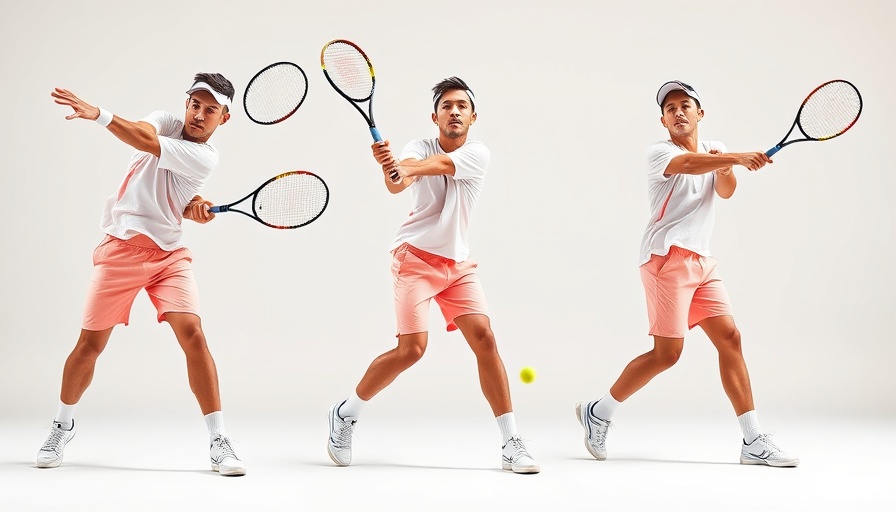
Understanding the Power of the Left Foot in Tennis Serves
In tennis, the serve is not merely a ritualistic toss followed by a powerful swing; it is a dynamic movement that relies heavily on weight transfer and body positioning. A pivotal element of the serve is the utilization of the left foot, especially for right-handed players. As visualized in the instructional video How to do the bodyweight transfer on the tennis serve, the left foot plays a crucial role in determining both the power and accuracy of your serve. Not only does a well-executed weight transfer enhance your performance, but mastering this technique can transform a novice player's game.
In the video How to do the bodyweight transfer on the tennis serve, we delve into the importance of foot positioning and weight transfer in improving serve effectiveness.
Why Jump Off Your Left Foot?
The left foot is the unsung hero of an effective serve. It is the closer foot to the net, giving you an advantage when propelling yourself into the court. By launching off the left foot, players are positioned to create a streamlined path to the ball, ultimately leading to a robust contact point. The process involves shifting approximately 80-85% of one’s weight onto the front foot prior to making contact with the ball. This transfer not only facilitates a better angle for power generation but also minimizes the need for excessive rotation in the lower body, a common pitfall for many players.
Balancing and Stability: Key Components of a Successful Serve
One of the most common mistakes players make is remaining too far on the back foot during their serve. When balance is prioritized, it allows for a smoother transition and more controlled follow-through. In a typical serve scenario, players should focus on minimizing weight on the back foot. This ensures that when they jump to hit the ball, they are not fighting against the inertia of their body leaning back, which would inhibit their ability to generate power.
Coaches often emphasize the concept of drawing the hips across the line toward the ball. By doing so, players not only enhance their balance but also maintain consistency throughout the serve—a factor that can easily distinguish a good server from a great one.
The Importance of Practice: Visualization and Technique
Another layer to mastering the serve is the balance of visual technique with physical execution. Whether practicing from a closed stance or open stance, continually focusing on the jump off the left foot encourages players to visualize success. This mental imagery, when paired with physical practice, can be a game-changer. Smooth transitions and a confident follow-through can significantly increase both performance and enjoyment of the game.
Strategic Considerations: Learning from the Pros
Tennis athletes at the top of their game consistently demonstrate effective weight transfer techniques. Observing professional matches can provide fans and aspiring players with invaluable insights into ideal biomechanics. As players experiment with their serve technique, they should take notes on their limits and successes while focusing on how the professional players employ their footwork. It is crucial to analyze and decompose each movement to understand its impact on the ball’s trajectory.
Conclusion: Time to Jump into Action!
Mastering the bodyweight transfer during a tennis serve is not only about physical prowess but also about building confidence and potential for growth on the court. By favoring the left foot, you increase your chances of a successful serve while enhancing your overall game. The power and accuracy born from this seemingly simple adjustment can open up a world of opportunities on the court.
Focus on developing these skills in practice, challenge conventional strategies, and experience the transformation firsthand. We encourage young players to gravitate towards targeted training that emphasizes weight transfer and balance, setting a strong foundation for future successes in the game!
 Add Row
Add Row  Add
Add 




Write A Comment